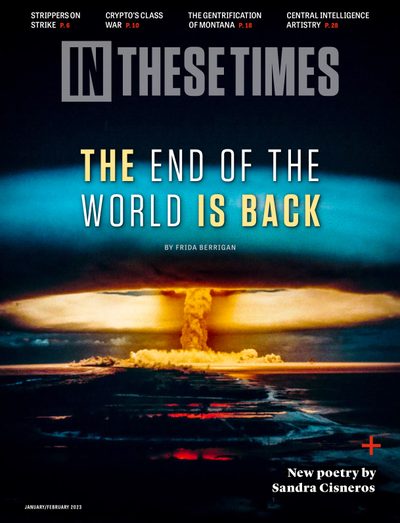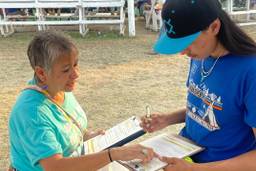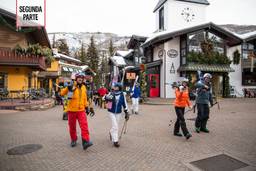In Montana, an Avalanche of Wealth Is Displacing Workers
The people who feed, clothe and clean up after the West’s rich newcomers can’t afford to live alongside them.
Joseph Bullington
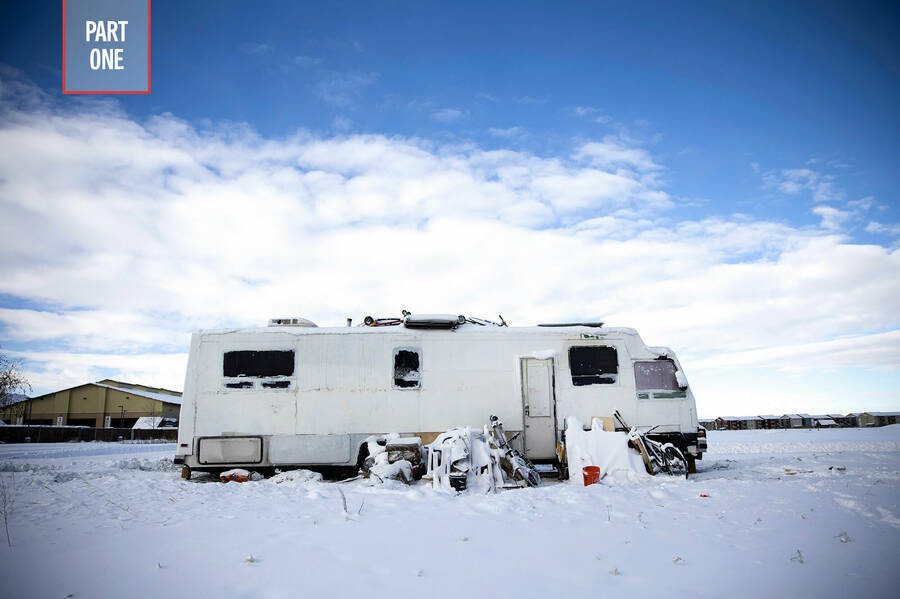
Listen to this article in audio form.
Lea este artículo en Español.
Archie Martinez goes to bed with stained hands and wakes up at 4:30 a.m. to meet the person he pays to pick him up at the Bozeman homeless shelter. They drive to the shop of a painting company in Belgrade, eight miles away, where Martinez climbs into one of the company vans for the hour-long drive up the mountain to the resort town of Big Sky.
As Martinez watches hayfields swim by in the dawn, a billboard blossoms out of the half-light beyond the van windows: “Dreaming of Your Own Equestrian Property?” Another advertises “Montana Life Real Estate.” The mountain sides along the highway glitter with the plate glass and stained wood of houses that weren’t there a few years ago. Early morning commuter traffic, construction vehicles and cement trucks jam the two lane road nearly bumper to bumper.
In Big Sky, the vans stop at one of the places where workers have cleared the lodgepole forest to make way for new construction. Martinez spends the day painting wood stain onto the timbers of a freshly built log mansion, and goes home to the homeless shelter in Bozeman with hands stained the color of someone’s second home. When the painting’s done, the houses will go on the market for $1.5 million each.
Big Sky, which sprawls across the mountains that separate the city of Bozeman from the west entrance of Yellowstone National Park, is one of the hot spots in the wave of outdoors tourism and luxury real estate that has engulfed Montana in recent years. This economy produces staggering wealth. Besides the visitors who swarm to the area in summer to hike, bike, raft and fish, half a million people a year ski at the Big Sky Resort, where lift tickets cost over $200. The New York Times called it “the future of skiing.” For those with more exclusive tastes — including Bill Gates, Tom Brady and Justin Timberlake — the Yellowstone Club boasts the world’s only private ski resort, where membership costs hundreds of thousands of dollars plus the price of one of the club’s multi-million dollar homes. In 2015, the club announced plans to build another 864 homes to meet demand.
But there’s a problem inherent in this economy’s contradictions: How do you commodify an entire region into a playground for the rich and keep workers around to make the lattes and paint the houses?
Archie Martinez is the answer.
As the outdoors economy booms, a surge in housing costs has plunged this area north of Yellowstone into an era of gentrification. Working people are left scrambling for places to live, losing their homes, moving to cheaper towns and, in many cases, undertaking grueling daily commutes from places they can afford to live to places they can’t afford not to work.
Sometimes, they’re displaced from the area altogether.
Here’s how the problem presents itself to Martinez: In Big Sky, where he works, two-bedroom apartments rent for an average of $2,258 a month (up from $1,700 in 2018) and the vacancy rate sticks close to 0%. In Bozeman, where Martinez lives, landlords have raised the average rent to $2,240 (up nearly 14% since 2020).
Martinez could look for an apartment where rents are lower in Livingston, 25 miles east over the Bozeman Pass, but wages are lower, too. The average rental in Livingston now goes for more than $1,500, while the average renter’s hourly wage is $12.79. Before taxes, that comes out to three weeks of work for one month’s rent.
Regardless, it’s hard to find a long-term rental because so many landlords no longer bother. Vacation rentals bring them more money. Madison County, which contains part of Big Sky, leads the state with 24 short-term rentals per 100 households, 10 times the statewide average.
Buying a house is even further out of reach. Single-family homes in Big Sky sell for an average of $2.5 million, up 155% since 2019. The median Bozeman house goes for $660,000, up nearly 50% since 2020. The figure in Livingston is $460,000, up 60% since 2019.
The problem for Martinez, then, is how to stay sheltered and avoid a massive commute. Governments, businesses and philanthropists have all failed to offer a viable answer, except for the homeless shelter. So Martinez recently came up with an answer of his own. He bought an old motorhome and, when he can afford it, he will park at a campground with hot showers and electricity. Until then, he’s staying at the shelter.
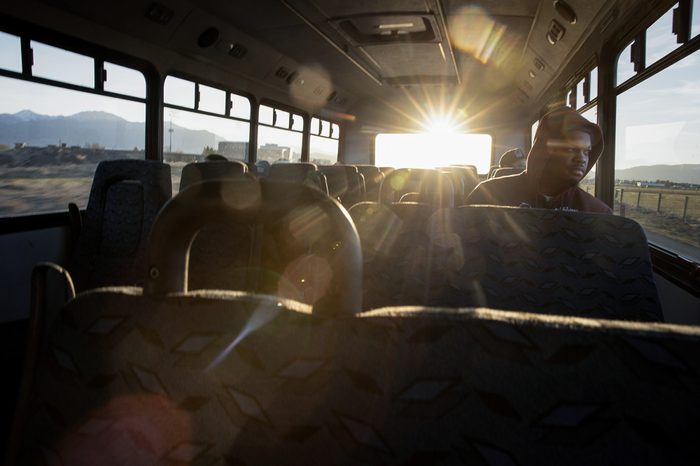
Martinez is not the first forced to draw such conclusions. Big Sky Community Housing Trust’s recent survey of Big Sky workers found that, of 566 respondents, more than 40% had to move out of their homes in the past three years because the rent had become unaffordable, or because their landlords had sold the home, turned it into a vacation rental or moved in themselves. In Park County, where Livingston sits, a 2022 health department survey found that, in just the prior year, more than 5% of households had been asked to move out of their homes or forced to move because of rent or mortgage increases.
Brian Guyer, housing director for the Human Resource Development Council (HRDC), the local nonprofit that runs the Bozeman shelter, says that, for low-income people who get priced out of the area, the only option is to “drive ‘til you can afford it.” Big Sky’s Madison County, for example, now has 2,575 more jobs than it has working residents, up 50% from 2010 — an indicator that the workers who build, maintain, clean and cook for the vacation houses of Big Sky can’t afford to live nearby and are shipped in daily from outside county lines.
To hear the talk about the outdoors economy, you’d get the impression the surrounding mountains are literal piles of cash. In truth, the products sold in this economy — whether a house with a view or skiing gear or a wildlife tour — gain dollar value only through the labor of workers. I set out to trace the networks of workers who are the engines of this economy, to understand where they live, where they work, and how they navigate the widening gap between the two.
Bozeman’s Walmart parking lot, far from the ritzy gear and clothing shops of downtown, feels like a shoreline where the rising tide of prosperity hits the rocks. Ancient camper trailers rest on rotted-out tires next to cars and pickups piled with personal belongings.
Russell Bell, 62, with clean-cut gray hair, relaxes in the driver’s seat of the Chevy Blazer where he lives with his two dogs. For 13 years he worked in the Big Sky area, taking tourists on horse rides. Now, he unpacks trucks of furniture for people moving in. He’s not looking for a place to rent — he doesn’t want to face the housing market nightmare. When he has gas money, he likes to camp in the mountains and take the dogs hiking, but he’s out of work and out of gas.
“I’m just trying to survive out here,” Bell says. “But I don’t know about winter. I gotta find something.”
From Walmart, you can follow a veritable trail of lived-in cars and ramshackle RVs a half-mile to the Bozeman homeless shelter. One August evening, I meet shelter director Jenna Huey on the front steps. She’s young, wears a T-shirt and jeans, smokes cigarettes and greets the shelter’s 93 residents by name as they check in for the night. She tells me HRDC created the shelter after a person was found frozen to death in the U-Haul where they were sheltering in the winter of 2010. The number of people seeking shelter here has more than doubled in the past three years, from 197 to 409.
HRDC’s Brian Guyer points out that shelter numbers only capture some of the region’s homelessness. “If we’re seeing those numbers increasing at the warming center,” he says, “we know there are also more people couch surfing, doubling up, living in their car or RV, more people finding a little spot on public land.”
Many of those people are, like Archie Martinez, employed, Guyer says: “HRDC picks up the tab for companies who are not paying their employees living wages.”

How did things get this way?
The Covid-related explanations emphasize the pandemic, which provoked a surge of interest in living rurally, particularly in the West’s so-called vacation communities. A rush of remote workers and second-home buyers, able to outcompete locals in cramped housing markets, drove down the available housing stock and drove up prices. Real estate speculators soon followed. As Guyer says, “When the speculative real estate investors arrive in a place like Livingston, your average home buyer just can’t compete.”
In truth, the pandemic land rush is only the most recent episode in a much longer story.
Where I’m from in rural Montana, the towns mostly come in two types. Some lie where they fell when an extractive industry — copper or coal, gold or timber — pulled up stakes and moved on, taking the money and leaving a pit of economic ruin (and maybe a pit of poisoned water on the edge of town). Other towns, due to some alchemy of proximity to an airport, an interstate and a famous national park, have attracted the interest of the outdoors industry. Instead of digging ore, workers in these towns spend their days in a different kind of extractive industry — prying a living from the wallets of vacationers and second-home owners.
My hometown of White Sulphur Springs, an hour and a half north of Bozeman, belongs mostly to the first category.
Like Bozeman and Livingston, the gold rush of the 1860s put White Sulphur on the map. By treaty, the area belonged to the Blackfeet Nation, but that didn’t stop the U.S. government from building forts to protect the miners. The boom was dizzying and, like the creekbed gold deposits and buffalo herds, would not last. Later, a spur off the Montana Railroad brought a lumber mill and the town boomed again, until the mill closed in 1982.
“The Montana pattern has been brief, explosive, frenetic, and often tragic,” wrote renowned Montana historian K. Ross Toole, “characterized by exploitation, over-expansion, boom and bust.”
All that remains of the glory days are some creek beds blasted wide by hydraulic mining, a tangle of clear-cuts and logging roads that mar the mountains where I hunt elk, and an old sign outside the Stockmen Bar that reads: “We Support the Timber Industry.”
These days, another sign hangs in the windows of main street businesses: “We Support the Black Butte Copper Project.” Despite risks to a beloved watershed, much of the community supports the mine because it promises economic redemption.
It’s possible, then, to call what’s happening in Big Sky, Bozeman and Livingston a success story. While communities like White Sulphur remain caught in the Montana pattern, these towns have instead hitched their carts to the more dependable (and environmentally friendly) steeds of the outdoors industry. While White Sulphur residents lined up behind the proposed copper mine, groups in Park County defeated a proposed gold mine. The anti-mining campaign was led by the Yellowstone Gateway Business Coalition under the slogan “Yellowstone Is More Valuable than Gold.” By and large these were not poets, but businesspeople, owners of resorts and outdoors shops, outfitter businesses and luxury real-estate firms. They meant the slogan literally.

The outdoors industry has grown into the largest sector in Montana’s economy, and the Big Sky-Bozeman-Livingston area is restructuring itself to capture this money. Gallatin County, which contains Bozeman, leads the state in tourist spending, with more than $1 billion in 2021, while Park County nets $237 million annually. Since 1970, the number of jobs in the three-county area has shot up by more than 420%, driven by service and retail. Per capita income in all three counties has more than doubled. The area population has grown 28% just since 2010.
These are good signs, according to Megan Lawson, an economist at Headwaters Economics, a Bozeman-based nonprofit that researches outdoor recreation economies. “The places that are doing the best have gone beyond purely tourism,” Lawson explains. “They use tourism as a marketing strategy to recruit retirees, to recruit remote workers.” Lawson acknowledges this shift has caused problems, especially in housing — Headwaters published a study in 2020 titled “Housing in Recreation-Dependent Counties Is Less Affordable.” But, she says, “there’s a host of problems that go along with being a successful community.”
What we’re seeing in the area — “it’s kind of a symptom of success.”
I follow Archie Martinez up to Big Sky one morning and whichever road I drive, I find houses being built. The mountains clang with construction noise: the shriek of chainsaws, the beeps of reversing bulldozers.
But these houses aren’t the kind where the people who build, paint and clean them can live. A survey by the Madison County housing board says 88% of workers who look for housing find it “difficult or impossible” to find. Meanwhile, nearly half the county’s houses stand empty, according to Census data, and a third are classified as “seasonal” or “occasional” homes.
Much of the construction and commuter traffic heads for the Yellowstone Club, Big Sky’s most exclusive enclave. In 2015, Sam Byrne, co-founder of the Boston-based investment firm that owns the development, told the Bozeman Daily Chronicle the club had sold 78 homes in one subdivision for an average price of $9 million, “making it by far the most successful residential resort subdivision in the country.” If house sale prices measure this community’s success, its failure could be counted in miles — the number of miles the “mountain maids” have to commute every day to clean these houses.
Mountain Maids of Montana is the name of the company that cleans many of Big Sky’s vacation homes. According to co-owner Molly Whalen, 80% of the company’s Big Sky clientele is in the Yellowstone Club, but none of her 20 year round employees can afford to live nearby. At 7:30 every morning, a company vehicle picks up workers in Bozeman and drives them up through the Gallatin Canyon in heavy traffic over roads that turn treacherous in winter.
In recent years, as landlords raised rents, Whalen struggled to find staff who can afford to live even as far off as Bozeman and Belgrade, though she pays almost $25 an hour. “It’s very difficult because we have people who are wanting services from people who can’t find affordable housing,” she says.
At 4:30 p.m., the cleaners load into the company shuttle for the ride back down the hill. They unload Big Sky’s dirty laundry at a strip-mall storefront in Bozeman called Persnickety Cleaners. Nonadawn Larsen and her family take it from here.

As luxury housing booms in places like Big Sky and Paradise Valley, which lies between Livingston and Yellowstone National Park, the impact ripples outward. The billionaires push out the millionaires, the joke goes. Higher-paid workers push out those making less, sending shocks of disruption down the highways that lead to towns like Livingston, which was cheap only 10 years ago.
In a roundabout way, the expansion of Big Sky is the reason Nonadawn Larsen has time to talk to me.
I meet Larsen at a coffee shop in Livingston, where her family lives because it’s more peaceful and slightly more affordable than Bozeman. She, her husband, her 22-year old daughter and son-in-law, and a friend make up Persnickety Cleaners’ laundry team. Together they take the laundry from a daunting list of commercial clients plus the heaps of laundry Mountain Maids brings down from the vacation homes of the Yellowstone Club.
“Oh, it’s unreal what comes from Big Sky!” Larsen says. “You can tell when they open a new section up there because our work doubles.” Her husband had to have knee surgery after “his meniscus finally folded in half,” she says. “I had to do his job plus my job, so now I’m out with an elbow injury” — repetitive-motion tendinitis from pulling literal tons of wet laundry from one machine and stuffing it into another. “Which is the only reason I’m here and not at work,” she concludes, taking a sip from an enormous, insulated coffee mug.
A friend of Larsen’s pays $1,200 a month for a trailer in Bozeman. “I couldn’t afford $1,200 a month if my life depended on it,” Larson says — not on the $17 an hour she makes at the laundry. But what the family saves on rent, they pay in other ways. To get to work by 7 a.m., the family of four piles into their car not long after 6 a.m. for the 30- mile drive over the Bozeman Pass — in winter, one of the scariest stretches of road in the state.
One of the things Larsen loves most about where she lives is the chance to see so many wild animals. One of the things she hates about her daily commute is seeing so many of them dead on the roadside. At dawn and dusk, when commuting workers like the Larsens drive these mountain roads, deer and elk are also on the move, between their nighttime grazing areas and their daybeds in the timber. Most days, the Larsens hurry to get the laundry done so they can get on the road before “deer-thirty,” but they don’t always make it. The family started out commuting in a Saturn sedan but totaled it against a deer.
Now, they drive a Nissan Pathfinder, which is safer but costs $100 in gas every four days. Luckily, their rent is affordable, as they live in a trailer in a resident-owned park. “I had planned on that being temporary,” Larsen says. “But, you know, all the costs went up and the wages didn’t.”
As housing costs pull away from local wages in places like Livingston, people who live and work in town get stretched.
Since she moved to Livingston from Ohio in 2017, Fee Lammon, 29, has always worked: as a prep cook at the Rib & Chop House, at Taco Bell, as a cashier at Town Pump. In those five years, she’s stayed nine different places: on the floor of a tiny apartment, in her car, on a couch in a friend’s trailer house, on another friend’s couch, in two different apartments of her own, in a room in a friend’s trailer, in a camper parked in a friend’s yard, and in a friend’s basement, where she lives now. “I’ve been a lot more fortunate than many people I know,” Lammon says. Her sister, for example, lives in a camper in a makeshift community behind a Bozeman hardware store.
Lammon explains why she decided to talk to me: “I don’t want a table full of people who have not lived this headache to make the decisions about how to fix it.” She has some ideas of her own: Put a cap on rental prices, for one, and ban short-term rentals, for another. “It’s absolutely disgusting,” she says. “It’s like, ‘We don’t care if we’re displacing people who’ve lived here a hundred years!’ They don’t give a shit about the history or the people or anything that makes this place good — they don’t care.”
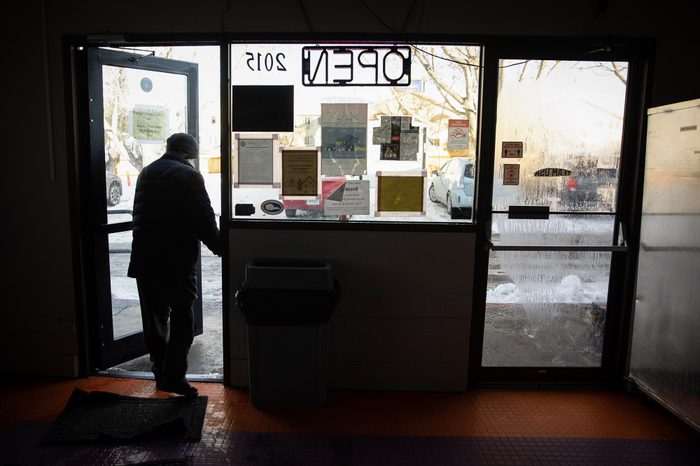
As Lammon and I talk, I’m struck less by the litany of places she’s lived — so many renters here have such a list— than by the fact she’s here. I ask how she holds on, and why. She says she has nothing to go back to in Ohio. Her parents are dead. The place itself is dead. “If you see a deer in a cornfield in Ohio, you’re lucky,” she says. Here, she sees wild animals every day.
The other answer is friends. The people who’ve helped her to stay, who have let her crash with them when times were tough — they’re the reason she stays.
Some people run out of reasons to keep fighting the current. Willow Bennett’s ancestors homesteaded in the area and she lived here almost all her life. Most of her family lives here. In 2019, Bennett and her son moved into a house in Belgrade, where her rent was $1,750. She could afford it, making more than $62,000 a year as a payroll administrator for a private wildfire defense company. But in June 2022, her landlord raised the rent to $2,400. She looked but couldn’t find anything affordable in the area — not in Belgrade, not in Bozeman, not in Livingston. “My option was to move back in with my parents,” she says. Instead, she moved where she could get a place of her own — in Amarillo, Texas.
“Some long standing roots have been yanked out of the ground,” Bennett says. “I wish I could take Montana with me and put it somewhere more affordable.”
Well-meaning people call it a “housing crisis,” but the words miss something essential about what’s happening here.
Shortages of affordable housing are nothing new to the West. They come and go like droughts, swelling with the booms and receding with the busts. Ten years ago, I wrote about how the Bakken oil boom drove rents for some apartments as high as $2,700 in the wind-beaten farming town of Sidney, Mont., of all places.
In this boom, however, housing and real estate are among the main commodities being sold. This is no more a “housing crisis” than the fracking boom was an “oil crisis” or the gold rush a “gold crisis.”
If you read the real estate listings, you realize that houses make up only part of what’s being sold. Far more advertising copy is devoted to the property’s “view shed,” access to “amenities” like hiking trails and rivers, and proximity to Yellowstone and other wild public lands — things that, to the extent they can be owned, belong to all of us. At least in theory. HRDC’s Brian Guyer sees a restructuring of the landscape along the same lines as gentrification elsewhere: Wealth moves toward the desired “amenity” — whether it’s Yellowstone here or Central Park in New York City — and pushes poorer people farther away. “These are public spaces that are effectively being choked off by housing speculation,” Guyer says. “They’re basically building Central Park West around Yellowstone. It’s just wealth trying to choke off public space.”
When I tell people outside of the West about what’s happening here, I often get some version of this response: “What did you expect? These are desirable places to live.” But this wasn’t al- ways the case. The vast swaths of public land that comprise the Greater Yellowstone Ecosystem remained in the public domain for the same reason they retained most of their biodiversity (including one of only two populations of grizzly bears in the lower 48): They were considered undesirable — lands too rugged, steep or remote to be plowed, mined or otherwise exploited. What has changed — what the explosion of the outdoors industry represents — is that companies have found ways to extract profit from these once worthless lands, to sell their wildness and beauty and bio- diversity. To bring to market, in short, things that exist here largely because the landscape’s ruggedness spared them from the market.
This new extraction has consequences not only for humans but for the nonhumans who make their homes here. These creatures live in the mountains and high valleys of Greater Yellowstone not because this is particularly rich habitat for them. At 22 million acres, the Greater Yellowstone Ecosystem may seem vast, but in truth it’s a small island, a fragment of what once was. Many of Yellowstone’s most iconic species — bison, elk, pronghorn antelope, wolves, grizzly bears — are actually creatures of the prairie. They used to live across this continent but were driven from most of their ranges by the Euro-American conquest, agriculture and market hunting. Yellowstone offered the expansive habitat that remnant animal populations, like grizzlies, need to survive. But even that’s shrinking.
More than a quarter of the Greater Yellowstone Ecosystem lies on private land. Because settlers tended to homestead in river valleys and other low-elevation spots, that private land includes much of the ecosystem’s richest wildlife habitat. Now, as developers turn more of those lands into luxury houses, the forces that drove grizzlies from the plains eat away at the edges of Yellowstone. According to the National Park Service, developers are disproportionately building in areas that are critical for biodiversity, including grizzly habitat, bird hot spots and riparian zones.
“Land use change is happening in the most important parts of the ecosystem, in the highest quality habitats,” says Andrew Hansen, an ecology professor at Montana State University in Bozeman. “The pressures to develop are just overwhelming.”
According to a study Hansen co-published with fellow ecologist Linda Phillips in 2018, development has consumed 10- 13% of the high-elevation ecosystem since Euro-American settlement, 25-32% of the mid-elevation ecosystem and 39- 57% of the low-elevation ecosystem. In recent years, Hansen says, the rate of development has only accelerated.
This problem is often framed as a tension between a fragile ecology and too many people moving into it. It’s a popular story these days — humans as a cursed species, condemned to destroy everything we touch. But this story conveniently ignores the question of who is moving into the ecosystem and who is getting pushed out.
As I stand outside the gates of the Yellowstone Club listening to the roar of construction, I think of Nonadawn Larsen, who likes to watch eagles and ospreys from her trailer’s porch in Livingston. I think of Fee Lammon, who explained why she lives here with a story about a camping trip she took to a lake where she saw a moose for the first time. Larsen and Lammon hang on, through crummy wages and elbow injuries and housing headaches and white-knuckle drives, because they love it here, for the same reason I do. Like few others in the world, this place offers the chance to participate in a wild commons, to share a vast territory of public land not only with other humans but with all sorts of other commoners, to work out our place among cactus and cottonwood, grizzly bear and moose. I think of one moose in particular — the one who almost stepped on me one night where I lay in my sleeping bag in my camping spot by the river, the one whose river-bottom home is, every year, being gobbled up by wedding venues and million-dollar fishing “cabins.”
How long, I wonder — how long until this wave of wealth washes all of them away?
This story was supported by the Leonard C. Goodman Institute for Investigative Reporting. Ramenda Cyrus contributed fact-checking.
This is part one in a two-part series. Click here for part two.
Joseph Bullington grew up in the Smith River watershed near White Sulphur Springs, Montana. He is the editor of Rural America In These Times.
